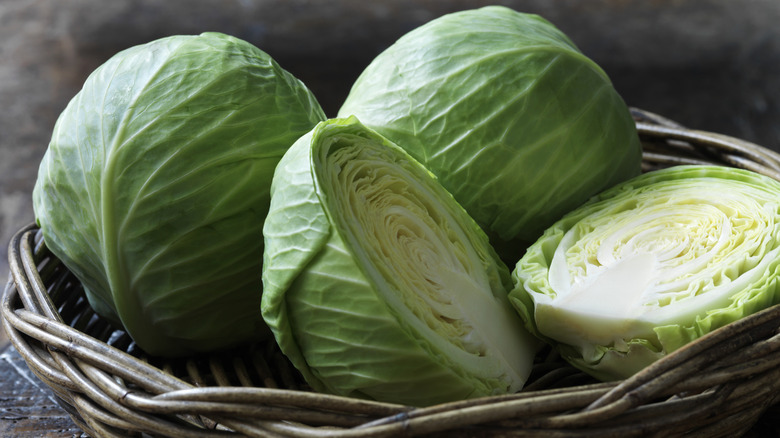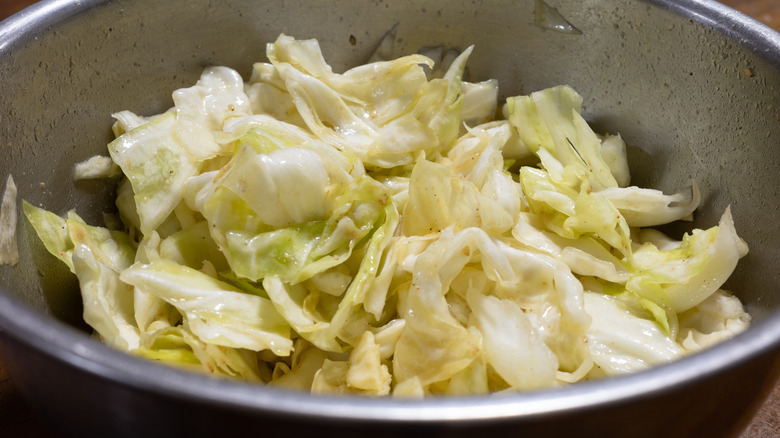Try Making Cabbage The Japanese Way And You'll Never Go Back
At long last, cabbage is getting the respect it's owed. Long relegated to gloopy, sugary coleslaws or boiled to death on the stove, this cruciferous vegetable has a satisfying crunch, tons of nutrients, and a mild, lightly peppery flavor that plays well in all sorts of preparations. In other words, more people are acknowledging that cabbage can be very good. But can it be hard to resist?
That's the promise of yamitsuki cabbage, a Japanese dish rapidly becoming popular in the U.S. You can find it on restaurant menus in such cities as New York and Los Angeles. It's characterized by deeply savory, umami flavors — so much so that another name for it is shio kabetsu, or "salty cabbage." However, "yamitsuki" is definitely a more powerful moniker. It literally means "addictive." In Japan, this dish is a popular drinking food, served at izakayas to nosh on between sips of beer.
Uncooked and minimally dressed, yamitsuki cabbage can bear a bit of resemblance to coleslaw, depending on how the latter is done. Mashed's coleslaw recipe, for instance, dials the mayo way back, skips the sugar altogether, and includes a bracing dose of apple cider vinegar. If you've got fresh cabbage on hand, you have almost everything you need for yamitsuki cabbage. The ingredients couldn't be simpler: Many recipes call for just salt, garlic, and sesame oil.
The basics of yamitsuki cabbage
You want cabbage that's a little on the delicate side, so go for Napa or, at the very least, regular green cabbage. (Red cabbage might be too hard.) Cut or tear it into bite-size pieces. The next most important ingredient is one you likely have on hand: salt. Some recipes call for salting the cabbage and setting it aside for a few minutes while you gather the other ingredients, as this will soften the vegetable somewhat and get it to release a little liquid.
To make the most basic version of addictive cabbage, start by grating a couple of cloves of garlic over salted torn-up leaves. Add some toasted sesame oil and a handful of toasted sesame seeds, and toss with your hands. While it's already a pretty umami-forward dish, some cooks take it even further with bouillon powder, a dash of MSG (an incredible secret weapon to boost flavor), or both. Chicken bouillon is a popular option. It's a great salt alternative, in general, though mushroom bouillon will keep things vegetarian, as will kelp tea, which you can find in Asian groceries.
That's the whole thing. However, you could take this into a slightly more slaw-esque direction by adding other slaw ingredients. Shredded carrots, for instance, would impart a sweet counterpoint to all those savory flavors, while sliced scallions will boost the umami even more.

